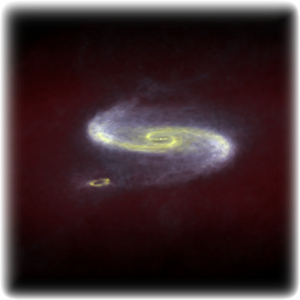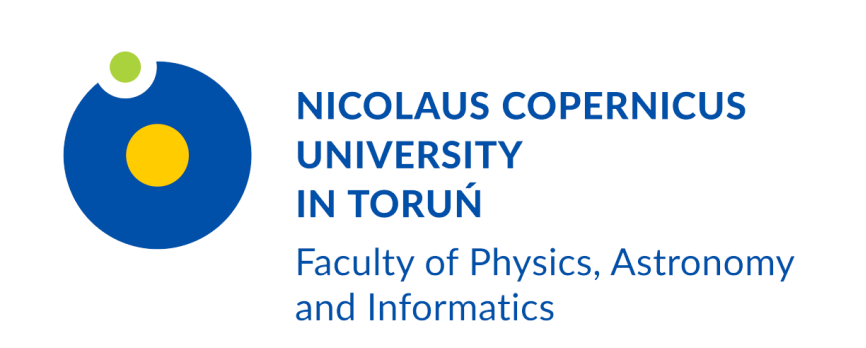 Astrophysical magnetohydrodynamics (MHD) is the field of research dealing with the dynamics of ionised gas interacting with magnetic fields in various astrophysical objects. Magnetic fields play crucial role in evolution of planets, stars, galactic interstellar medium, accretion disks and astrophysical jets. The presence of magnetic fields in astrophysical environments induces magnetohydrodynamical instabilities leading to turbulence. A significant part of mater in the Universe appears in the ionised state. Electric currents flowing in ionised astrophysical media are sources of cosmic magnetic fields (Ampere’s law) and their mutual interactions lead to Lorentz forces influencing the dynamics of ionised gasses.
Astrophysical magnetohydrodynamics (MHD) is the field of research dealing with the dynamics of ionised gas interacting with magnetic fields in various astrophysical objects. Magnetic fields play crucial role in evolution of planets, stars, galactic interstellar medium, accretion disks and astrophysical jets. The presence of magnetic fields in astrophysical environments induces magnetohydrodynamical instabilities leading to turbulence. A significant part of mater in the Universe appears in the ionised state. Electric currents flowing in ionised astrophysical media are sources of cosmic magnetic fields (Ampere’s law) and their mutual interactions lead to Lorentz forces influencing the dynamics of ionised gasses.
Research activities carried out at Institute of Astronomy, NCU include generation of galactic magnetic fields, propagation of galactic cosmic rays and evaluation of their role in cosmological evolution of galaxies, propagation and stability of astrophysical jets, as well as early stages of planet formation.
The goals of our studies include understanding mechanisms of:
- Generation of galactic magnetic fields with the aid of cosmic rays, formation of molecular clouds and formation of stars.
- Interactions of cosmic rays with the interstellar matter.
- Formation of galactic winds and their influence on galaxy evolution.
- Formation of planets in dusty circumstellar gaseous discs.
Investigations of magnetohydrodynamical phenomena conducted at the Institute of Astronomy, NCU involve the numerical simulations technique. Development of computing technologies we are witnessing nowadays triggers spectacular progress in numerical modelling of astrophysical phenomena. However, numerous fundamental problems remain unsolved. An example is evolution of galaxies including interactions of stars, interstellar gas, magnetic field, cosmic rays, electromagnetic radiation and dark matter. Research in this field is exceptionally attractive, and as such is a part of the teaching process at Institute of Astronomy of Nicolaus Copernicus University.
Most important publications:
- Girichidis P., Naab T., Walch S., Hanasz M. i in. (2016), Launching Cosmic-Ray-driven Outflows from the Magnetized Interstellar Medium, ApJ, 816, L19
- Kulpa-Dybeł K., Nowak N., Otmianowska-Mazur K., Hanasz M. i in. (2015) The effect of supernova rate on the magnetic field evolution in barred galaxies, A&A 575, A93
- Siejkowski H., Otmianowska-Mazur K., Soida M., Bomans D. J., Hanasz M. (2014) 3D global simulations of a cosmic-ray-driven dynamo in dwarf galaxies, A&A 562, 136
- Hanasz M., Lesch H., Naab T., Gawryszczak A., Kowalik K., Wóltański D. (2013) Cosmic Rays Can Drive Strong Outflows from Gas-rich High-redshift Disk Galaxies, ApJ 777, L38
- Kowalik K., Hanasz M., Wóltański D., Gawryszczak G. (2013) Streaming instability in the quasi-global protoplanetary discs, MNRAS 434, 1460
- Hanasz M., Wóltański D., Kowalik K. (2009): Global galactic dynamo driven by cosmic-rays and exploding magnetized stars, ApJ Letters 706, 155
- Hanasz M., Otmianowska-Mazur K., Kowal G., Lesch H. (2009): Cosmic ray driven dynamo in galactic disks. A parameter study, A&A 498, 335
Group members:
- prof. dr hab. Michał Hanasz
- dr Dominik Wóltański
- mgr Mateusz Ogrodnik

 Piwnice k. Torunia, 87-148 Łysomice
Piwnice k. Torunia, 87-148 Łysomice